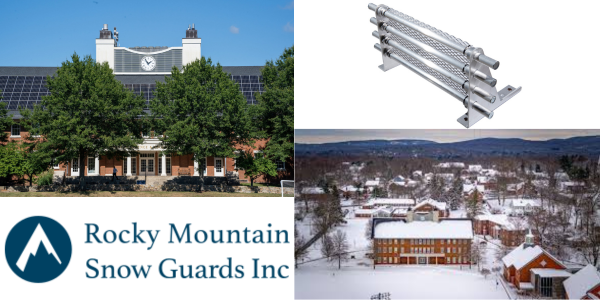New Shingles for Historic Homes

By GK Sharman, Writer, Atlas Roofing Corporation
Ferguson House, Cedar Rapids, IA
How to maintain a home’s character during a re-roof.
Roofing technology has changed a bit over the years. Houses built in the late 1800s – a Queen Anne Victorian, perhaps – might have had a slate roof with a slat-board deck underneath.
Natural stone is gorgeous. It’s durable, waterproof, fire-resistant and easy to clean. All of which is great — unless you own the house and need a new roof. And discover that slate is crazy expensive and that the historic district you live in can regulate practically everything you do to the house.
Function Over Fashion
Putting a new roof on a historic house involves more than picking your favorite shingle styles and colors. From permitting to nailing, the process can involve technology and bureaucracy as much as aesthetics.
Though asphalt shingles are hardly new – they were first used in the United States in 1901 and available almost everywhere a short 10 years later – many older homes still sport roofs made of more traditional materials such as tile, slate and wood. Historic district boards across the country frown on ripping off time-honored materials and replacing them with modern roofing products that clash with the character of the neighborhood. Many old-house aficionados don’t want to give up their slate roofs either, but historic accuracy often bends to the supremacy of economics and contemporary building codes.
For all the focus on aesthetics, technology is a far more important part of the re-roofing process.
“The first thing that comes to mind is ventilation,” said Bill Taylor, an Atlas sales representative in history-soaked Northern Virginia. The house has to breathe, which means air has to come in from somewhere and also have a path to exit. Historic houses often do the exhaust side correctly, he said, but have a problem on the intake side when they are re-roofed. On slate roofs – the preferred roofing material for ages – gaps between the shingles allowed the house to breathe. When slate is replaced with a modern, code-compliant asphalt roof, those gaps go away and ventilation becomes even more important. The best option, he said, is continuous intake through vented soffits front and back and continuous exhaust via the ridge vault.
If the home still has a slate roof, chances are the deck is made of slats, Taylor said, not the plywood common today. Slats can affect the nailing configuration for asphalt shingles. Roofers working with slats have to adjust where they nail — which may not seem like a big deal, but even a small mistake can void the warranties on the new roofing shingles. The more uneven deck surface also can benefit from premium synthetic underlayment that is more tear- and wrinkle-resistant, as well as engineered felt such as Atlas Gorilla Guard® rather than standard 15-pound felt.
Mixing New With Old
The rules controlling the kinds of modern roofing materials you can use on an old house vary widely from region to region, city to city, even neighborhood to neighborhood. A few places offer general guidelines, but many have strict standards and complex review processes. In general, historic districts or other governing boards expect any sort of remodel to be done in a manner that is understanding of and sympathetic to the home’s historic character. New roofs should resemble the original materials, harmonize with the home’s architectural style and fit in with the neighborhood. The choice of materials is important, especially on a steep roof where the shingles may be the dominant architectural feature of the home.
In New Rochelle, NY, for instance, the Tudor Revival style was popular in the 1920s and 1930s and often was roofed in slate or wood. “Choose replacement materials with texture,” advises the Manual of Historic Styles and Materials for the Rochelle Park-Rochelle Heights Historic District. “If asphalt shingles are used instead of slate or wood, they should be textured and have variations in color and thickness.”
For a Spanish Colonial with barrel tiles, don’t even think about asphalt shingles. “Maintain original tile roofs,” the manual demands. “Repair with matching tiles rather than replace.”
Still, Taylor said, there’s no physical reason why an experienced contractor couldn’t put modern shingles on a historic house, even one that’s 200 years old, as long as the roof is not flat or low-sloped — and the historic board agrees.
“It’s definitely possible to get the historic look,” he said, noting that Atlas StormMaster® Slate is a popular choice. A taller shingle offering a larger exposure, it mimics the look of slate and also comes in colors that are close to the natural material.
Getting The Job Done
A contractor with experience in working on historic homes is essential, he said. He should know how to prepare the substrate so shingles can be installed and know how to handle flashing on an older roof, especially around chimneys, a major source of leaks. Crews also may need closer supervision to make sure the home’s historic character is maintained.
To find the right contractor, Taylor suggested, check with the local historic association or professional roofing associations in your area.
The right shingle, installed correctly, can be a touch of modernity that preserves the charm of the past and keeps your home looking appropriately historic for years come.






















Comments
Leave a Reply
Have an account? Login to leave a comment!
Sign In